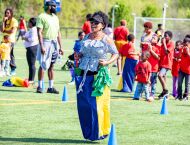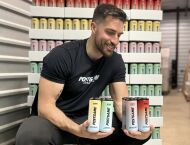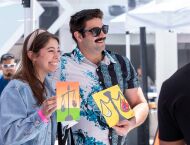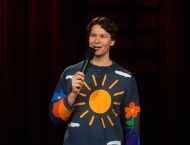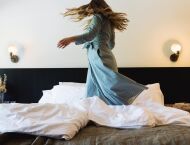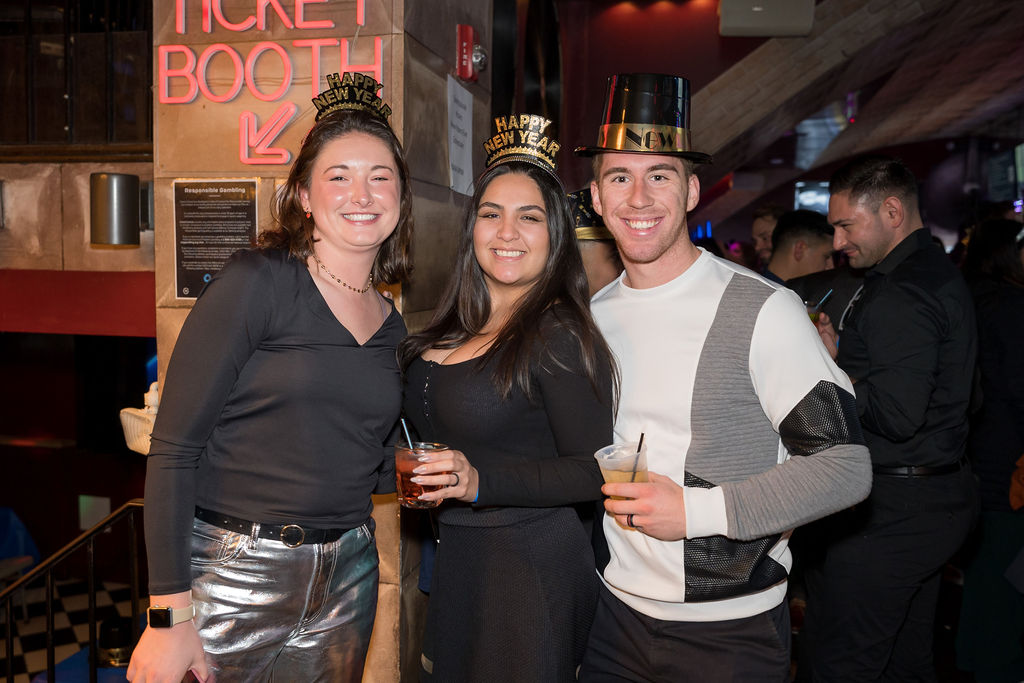Culture
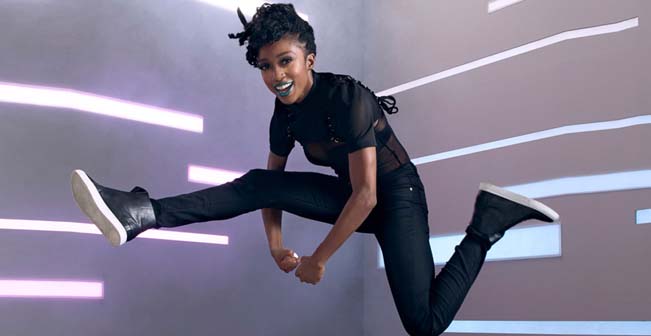 www.kennedy-center.org
www.kennedy-center.org
Hip-Hop Dancer Comfort Fedoke Comes to Kennedy Center
July 26, 2018 @ 12:00am
Comfort Fedoke realizes that in order to grow and gain skills in anything you aim to do, you have to start where you are. The Emmy Award-winning dancer didn’t start out as the superstar we have seen her become since her TV debut on So You Think You Can Dance. Fedoke was drawn to dance after suffering an injury while running track and field. For her, it started with the electric slide, a super popular line dance that’s social, group-focused and fun for dancers of all levels – much like the Dizzy Feet Foundation’s National Dance Day.
This Saturday, dancers of all skill levels and abilities will gather at the Kennedy Center to celebrate dance by learning choreography, watching incredible performances and participating in various dance-related events. In honor of this nationally recognized holiday, we spoke to Fedoke about her dance career, working as a choreographer for the one-and-only Missy Elliott and what’s she’s most excited about for National Dance Day.
On Tap: National Dance Day is all about celebrating the art of dance, encouraging Americans to dance and making it accessible to all kinds of people of all ages. What made you get involved with this event?
Comfort Fedoke: It’s so important [to have] a place and a platform for all types of dancers. Dance is a universal language and I just have to be involved with it because dance is my life. I always say, “Movement is my communication, so watch and get to know me.” I really wanted to make sure that National Dance Day could be celebrated by everyone and we can all communicate through dance and movement. I have to participate in it as much as I can, to just make sure that dance is being put on that platform. [As dancers,] we get put in the background so many times, so to actually be put in the front and be able to celebrate [dance] through movement is just beautiful.
OT: What inspired you to dance and how did you get started?
CF: It was just something in my body. My mom dances. She’s a really, really incredible dancer. My dad also – he has his random drops and claps and stuff. I think it’s innately in our family, so rhythm was just something that was destined [for me]. It turned into a hobby and then it turned into a career. I couldn’t dance at first. I could do the electric slide that my mama taught me and that was all I needed. But I got hurt because I used to run track and field. Dance was just another passion, another outlet that felt like a competitive sport. I didn’t really think of dance as a sport then, but in my head it was so competitive so I was able to gravitate to dance competitively. I just loved the rush and the feeling of freestyling and battling. After that, [my inspiration came from] learning from and wanting to dance with artists that I love to listen to all time like Michael Jackson, Janet Jackson and Missy Elliot who were dancing as well as singing and performing. That was so incredible [to me] that they were dance artists.
OT: I know it’s every dancer’s dream to work with Missy Elliott, so that must be amazing.What has been your favorite experience working with her?
CF: When I first got with Missy, that was the start of everything. As dancers, some of our first steps of wanting to become a dancer is because we want to dance with an artist or on Broadway. Whatever the case may be, it’s always with someone else – it’s never on your own. As dancers, we can brand ourselves. If you’re a dancer in Los Angeles, your goal is to dance with an artist. Coming from a freestyle space, I wanted something with more movement. When Missy Elliott came in 2012 and said, “Hey, I’m coming back and we’re looking for dancers,” I went to the audition. The audition was for “Get Ur Freak On,” which is one of my favorite songs and videos, and the biggest surprise –which still drives me crazy to this day – is that I was the only one she picked from Los Angeles out of the entire [group].
OT: Wow, that’s a huge honor!
CF: Yeah, it was crazy! Since then, I’ve been working with her and going around the world. She trusts in my movement and she asks me to help create the choreography so I’ve been able to have my hands on a lot of the choreography at a lot of points. I’m from Nigeria, so when we did “WTF (Where They From),” she saw me doing a lot of my Nigerian moves and was like, “Oh my gosh! Where’s that from?” and I was like, “Oh from Naija” and she was like “Whaaat? We gotta put this in the music video!”So it was cool to be able to put some Naija moves like “Shoki” on the map. My Naija fam was like, “Ohhhhh!” [when they saw the video]. I feel like that beginning point was my greatest highlight with Missy. From there, it was just history.
OT: So let’s get back to National Dance Day. Why do you think it’s a good idea for people to participate and what are you looking forward to most about it?
CF: I think you should just ask yourself “Why not?” It was established by Nigel Lythgoe in 2010, and it’s recognized by Congress. It’s actually a day, you know? It’s just one of those days when everyone can share – there’s no color lines, there’s no anything. I’m just looking forward to being able to be onstage at the Kennedy Center and looking out into the audience and saying, “Look how many individuals are out here for one reason and one reason only: to elevate themselves through movement and dance.” It’s also good because dance is important for the human body – mentally and physically. The more you dance, the more you move. My good friend Courtney Galiano [now Courtney Platt] has MS [Multiple Sclerosis], and she is a fighter. She has an MS walk where she actually dances and moves and tells people to not let that bring them down. Dance does that for so many people in so many different ways. That’s why National Dance Day can involve anybody through any health issues.
OT: I love that. I was watching the combo video and I appreciate that you guys make it accessible to people that don’t have a full range of movement. That definitely ties into the idea of making National Dance Day accessible to everyone.
CF: Absolutely. People that can’t walk and aren’t mobile can create hand tuts. You can still dance with your hands and create different tut lines and stuff like that. Bollywood [has] all the different lotuses and the hand movements they create are beautiful. That’s still movement and it’s still elevating you in a different way. National Dance Day just speaks to everyone.
OT: Do you have any advice for people that may be participating in National Dance Day for the first time?
CF: It’s extremely easy to participate. Mandy Moore created the choreography, and she made it so you can do it your own way. She takes some of the moves and she also gives you a little bit of a platform to showcase [your dance] with the hashtag #dancemademedoit. It’s something people can share with friends and not feel alienated. It’s just something they’re trying to get everyone to participate in and really show that each individual community can do it and not feel insecure. Not everyone is an incredible dancer, but if you’re moving with some type of rhythm, or if you can do a two-step and take at least one of those moves and turn it into the entire dance, then you can do something. You’re a dancer now. It’s something that really anyone can enjoy.
OT: Here’s one last question that I’d like to throw in for fun. What’s a question that you wish that I’d asked you?
CF: Hmmm. Maybe “What’s my favorite dance movie?”
OT: Okay, what’s your favorite dance movie?
CF: It’s The Goofy Movie, which is kind of a ridiculous answer.
OT: Well, they had some moves. I can see that.
CF: Yo…Powerline?
OT: A.k.a. Michael Jackson
CF: He was going in. I found out it was choreographed and played by Anthony Thomas, who is my favorite choreographer now. He did all of Rhythm Nation. I freaking love that movie. It’s like my go-to movie and when I was a kid, I tried to learn that choreography. Plus it had a perfect cast!
Catch Comfort Fedoke leading the official National Dance Day routine this Saturday, July 28 at the Kennedy Center. For a full list of National Dance Day events, click here. This event is open to the public and free to attend; no tickets required.
The John F. Kennedy Center for the Performing Arts: 2700 F Street, NW, DC; 202-467-4600; www.kennedy-center.org


